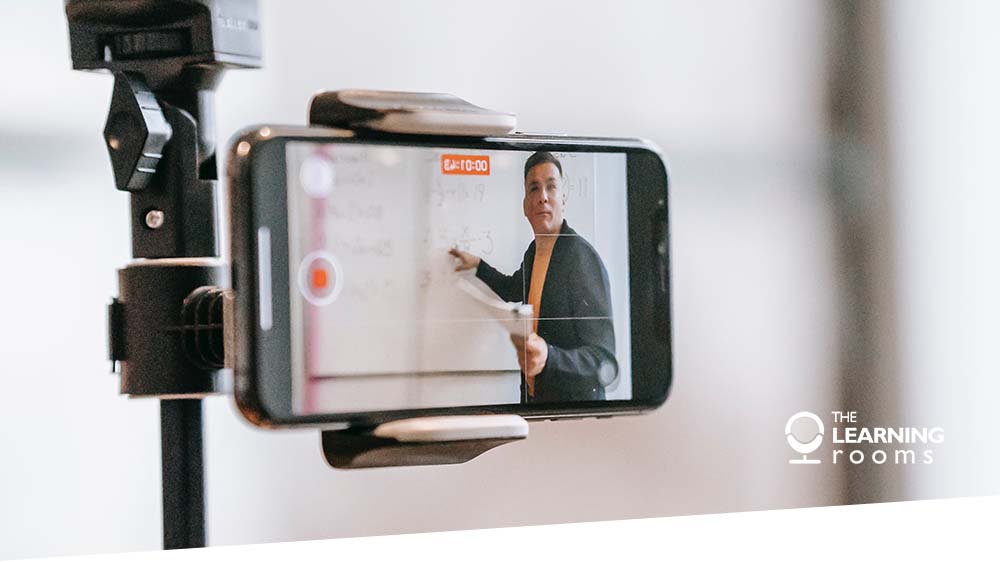
12 Aug Flipped method for eLearning
Does your organisation want to maximise efficiency and increase productivity? As the old adage says, ‘Time is money’, and this certainly rings true when it comes to time spent on learning, development and training. To utilise one your most valuable resources, time, to its full potential, the Flipped Method for L&D might just be what you’re looking for.
For a brief history of the Flipped Classroom, let’s dive back to 2007. According to Trach (2020) the Flipped Classroom concept emerged in Colorado, when two teachers, Jonathan Bergman and Aaron Sams, began to record their lessons as videos as a means to teach students who were out sick. Sams and Bergman credit the concept to the authors of a paper entitled, ‘Inverting the Classroom’ by Maureen Lage, Glenn Platt and Michael Treglia in 2000. Since then, there have been several studies on the flipped classroom methodology.
Lage et al., (2000) define it as, “events that have traditionally taken place inside the classroom now take place outside the classroom and vice versa” (Lage et al. 2000, p. 32, referenced in Lo & Hew, 2017, p. 4) Bishop and Verleger (2013) define it as: ‘a technology-supported pedagogy that consists of two components: (1) direct computer-based individual instruction outside the classroom through video lectures and (2) interactive group learning activities inside the classroom.’ (Lo & Hew, 2017, p. 4) Lo & Hew give their own take on the flipped classroom suggesting that the two key elements are ‘the use of audio or video materials (e.g., instructional videos, YouTube, screencasts, podcasts) for out-of-class learning and regular (instead of optional) face-to-face class’. (Lo & Hew, 2017, p. 5)
So how does all this apply to meeting your needs in providing efficient L&D training to your team? The flipped method is a blended learning approach, which incorporates both technology and in-person training in order to maximise the potential for learning. It makes optimal use of time by enabling your team to become familiar with the material before-hand so that consolidation, deeper learning and application of the new skills can take place in the face-to-face training sessions.
Let’s imagine a situation where the flipped method for eLearning might be used in your organisation. You would like your team to do Health and Safety training. Health and Safety videos and online resources with the core content are shared with the team through your learning management system (LMS) in advance of any face-to-face training. The team access the material online in their own time and work through it at their own pace. The organisation can track their activity, to see whether they have engaged with the material and might also follow up with a quiz. There might even be a discussion forum set up, so the team can ask questions and discuss the topics with each other.
After the team has engaged with the Health and Safety material online, a face-to-face training session follows. The team might work collaboratively and engage in active hands-on activities to apply their new skills or consolidate the new learning. At this stage the groundwork is done and the team are building on what they have learnt. Valuable time can now be spent clarifying queries, checking for understanding and building the bridge between the online material and real-world application of the new training in your organisation.
If used appropriately, the flipped classroom method for eLearning could be a learner-friendly and time-efficient alternative to traditional full-day training courses. With no time wasted, the flipped classroom method for eLearning can work to achieve the L&D goals of your organisation. Your staff can enjoy the benefits of having access to digital learning and resources while also being able to get together and actively learn in the classroom environment.
How could you use the flipped classroom method in your training? We would love to talk through your ideas.
References
- Lo, C.K. & Hew, K.F. (2017). A critical review of flipped classroom challenges in K-12 education: possible solutions and recommendations for future research. Research and Practice in Technology Enhanced Learning. 12:14 DOI 10.1186/s41039-016-0044-2 Retrieved 1 April 2022 from https://telrp.springeropen.com/track/pdf/10.1186/s41039-016-0044-2.pdf
- Teaching in Education (20 June, 2017) Flipped Classroom Model: Why, How, and Overview. [YouTube video] Accessed on 30 March, 2022 from https://www.youtube.com/watch?v=BCIxikOq73Q
- Trach, E. (1, Jan, 2020). A Beginner’s Guide to Flipped Classroom. Schoology. Retrieved 30 March, 2022 from https://www.schoology.com/blog/flipped-classroom


